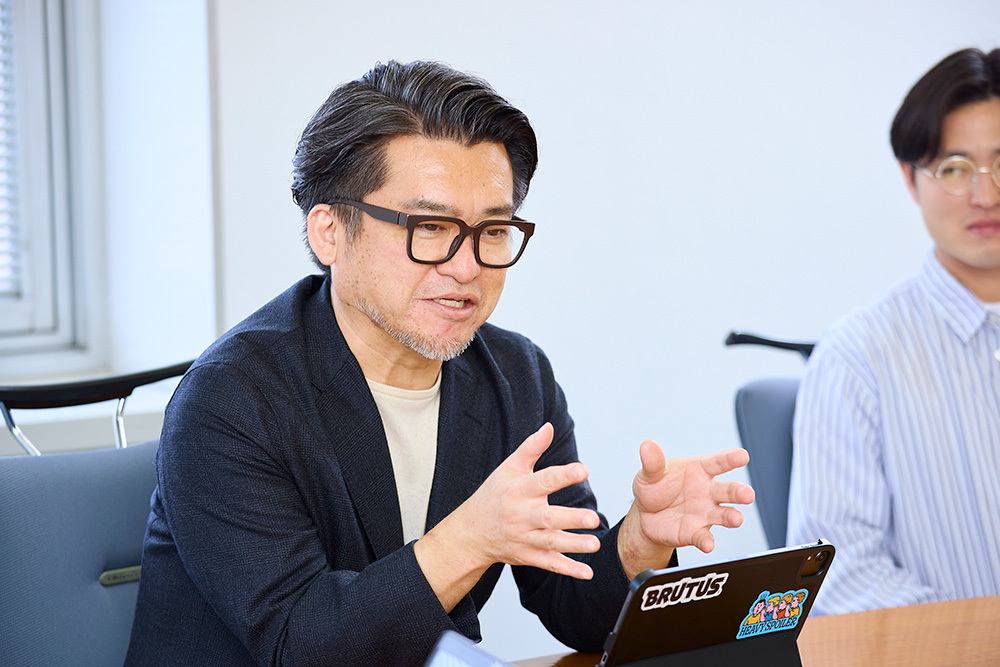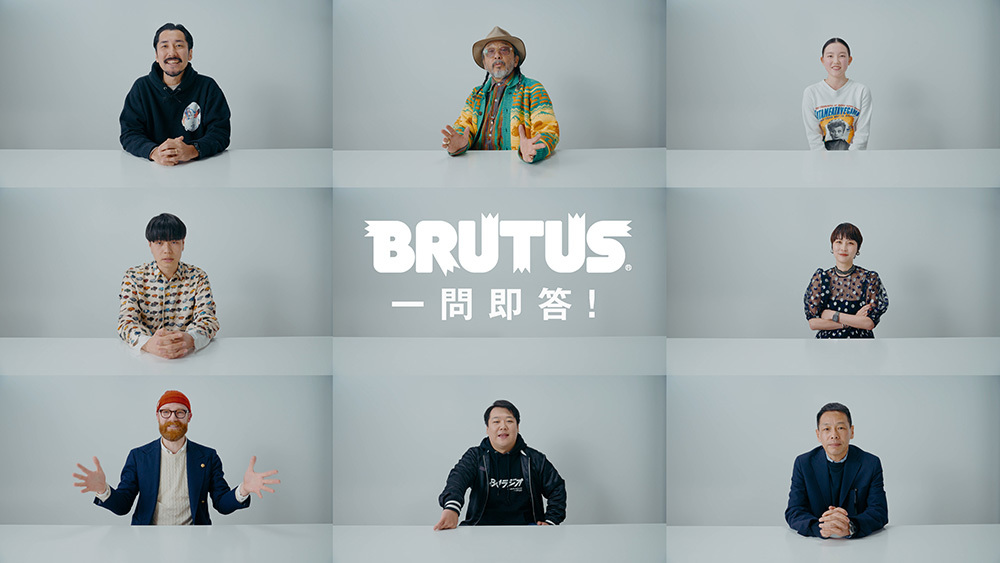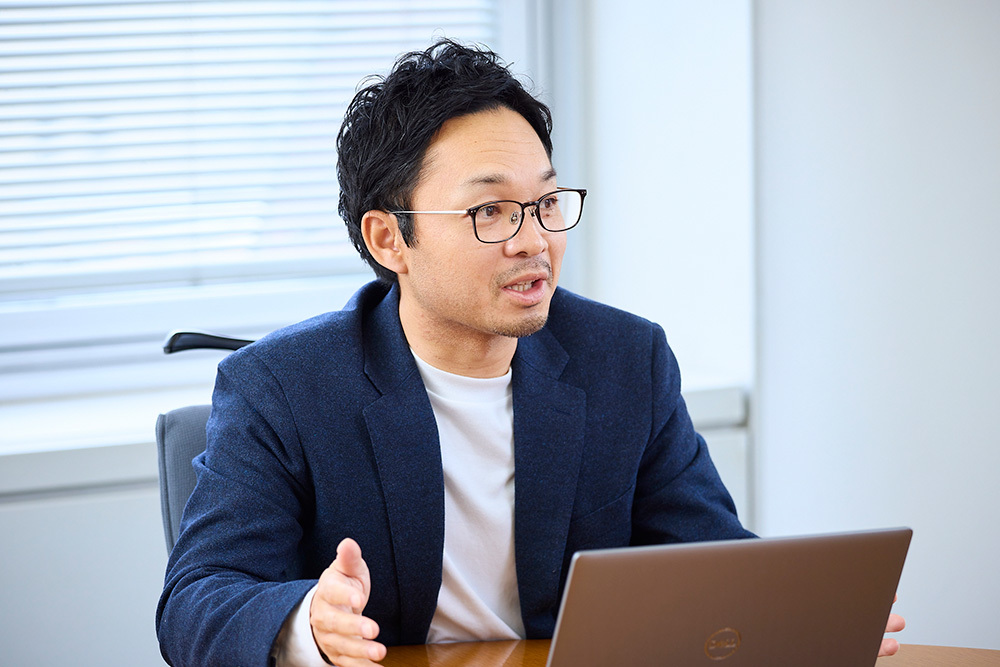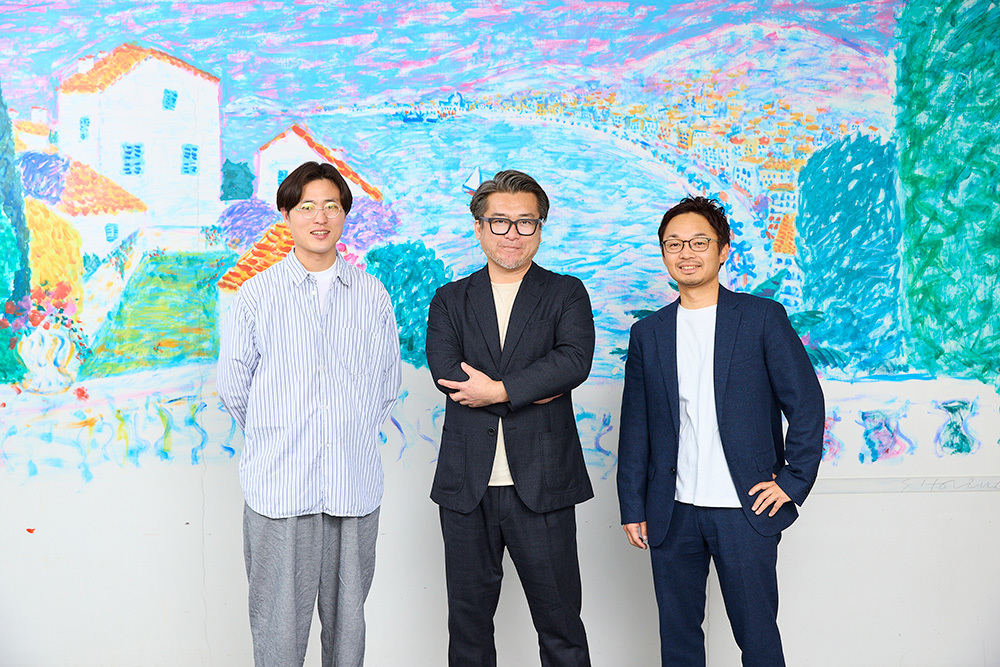The creative power and brand strength cultivated by publishers through magazine and book production are now gaining attention. This series introduces publishers' assets and content creation for today's era across various themes, offering marketers insights on leveraging the publishing industry.
Last time, we focused on "video," introducing the efforts of the magazine "BRUTUS" ( article here ). This time, we explore Magazine House's video strategy, which leads the industry by releasing distinctive videos under diverse magazine brands, sharing examples along the way.
Our guests are Akira Tajima, Editor-in-Chief of BRUTUS magazine, and Isao Cho, Head of Magazine House's Business Production Department. The interviewer is Kazuki Nakamura from Dentsu Inc.'s Publishing Business Development Division, which develops digital solutions including video.
Magazine House
A leading Japanese publisher handling a wide range of publications including the periodicals anan, POPEYE, Croissant, BRUTUS, Tarzan, Hanako, GINZA, CasaBRUTUS, ku:nel, and &Premium, as well as books, mooks, and web magazines.
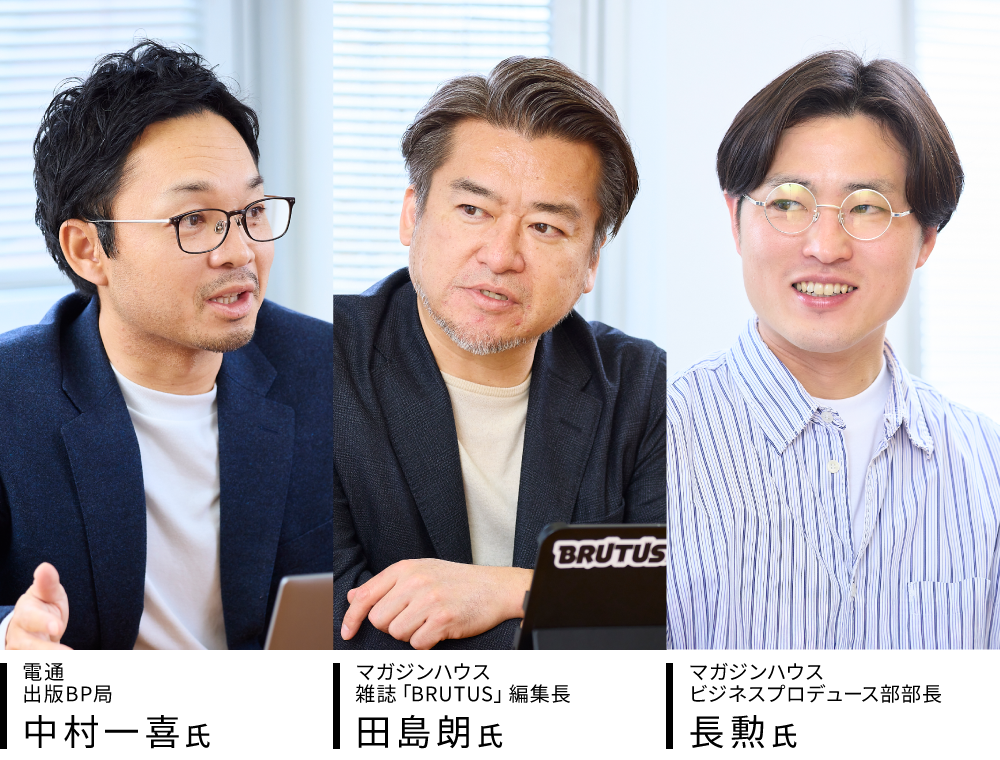
Magazine House's magazine brands are "Creative boutiques that also own media."
Nakamura: Many media outlets are now focusing on video. Could you tell us what kind of video strategy Magazine House is pursuing for its magazine brands?
Naga: Two years ago, BRUTUS took the lead in video production for our company, launching " BRUTUS ORIGINAL MOVIE." Its success led to more magazine brands like anan and POPEYE focusing on video.
Magazine House's strength lies in its ten regularly published magazine brands, enabling us to create diverse videos tailored to various lifestyles. We tell advertisers we want them to think of Magazine House's magazine brands as "creative boutiques that also own media."
Naga: Typically, when a company runs a commercial, they must consider both production and the media platform for distribution. Magazine House can handle both aspects comprehensively. Furthermore, the advertising platforms already have a significant fan base, ensuring strong reach.
Nakamura: While TV commercials remain a primary form of video advertising content today, placing ads on Magazine House's media platforms—which have a large fan base—offers distinct value compared to TV commercials, right?
Naga: Exactly. When we really think about the value of magazines for advertising, we see two key aspects: worldview and influence. Worldview means that when featured in a magazine, products or services look appealing, making people think, "That's nice," or "I want that." Influence refers to the measurable value, like getting page views on a product or service's website after being featured in the magazine.
By focusing on video content, Magazine House's magazine brands have also significantly increased their social media followers. While Meta platforms like Instagram are environments where follower growth has traditionally been challenging with conventional management methods, BRUTUS's Instagram continues to gain an average of about 5,000 to 6,000 followers monthly. Over the past year, its follower count increased by approximately 130% compared to the previous year. Other magazines show similar accelerated growth: anan at about 150% and POPEYE at about 120%. Regarding YouTube channels, BRUTUS's subscriber count, previously around 2,000, has grown to the point where it could reach 100,000 within two years.
Nakamura: So the effectiveness of video initiatives is positively impacting Magazine House's various media platforms. From an advertiser's perspective, introducing their own products on their own media is "self-introduction," while collaborations with publishers are "third-party introductions." Every company does self-promotion, but relying solely on that has its limits. Data clearly shows that adding third-party endorsements significantly boosts interest in products and services. Therefore, we want to actively communicate to advertisers how crucial publisher-collaborative content is. In this context, we believe Magazine House is one of the most reliable partners for advertisers.
Tajima: Additionally, as part of its B2B business, BRUTUS launched the creative boutique "PB" in 2022. This initiative leverages the creative capabilities of the BRUTUS editorial team to solve various challenges for companies. BRUTUS collaborates with external creators to handle advertising promotions, event planning, product development, and media planning/operation.
Nakamura: So this isn't about promoting BRUTUS itself, but rather leveraging the experience and connections BRUTUS has cultivated over the years.
Tajima: Exactly. "PB" is already generating significant sales and is currently so busy we can't take on new orders. We've also launched "BRUTUS mapzine" as a new media platform originating from BRUTUS. We call it a "map-linked app media" – it allows users to search for spots previously featured in BRUTUS on a map.
Why "media"? Because it's structured so the editorial team regularly sends micro-content—mapped spots—to the app. It's one of our key projects, representing an unprecedented initiative beyond traditional magazine production.
Expressing the magazine's roots in diverse human desires concisely through video
Nakamura: Regarding video, Magazine House not only produces original content in-house but also focuses on co-creation with companies. For example, KDDI's "Hirumiru Magazine." This platform distributes various magazine features in video format, and BRUTUS has been participating since April 2024.
Tajima: Around May 2023, we launched "BRUTUS ORIGINAL MOVIE," and as we approached the one-year mark, we received the offer for "Hirumiru Magazine." It coincided with completing a full cycle of original video production tied to our features. We wanted to create content with a different form of expression than before, but faced budget and resource constraints.
"Hirumiru Magazine " is a collaboration involving KDDI and multiple media outlets. Based on the concept "If you encounter something you love during a little break, it becomes a special moment," it aims to create new experiential value on smartphones by delivering magazine-specific content as a "moving magazine." Rather than directly promoting products within the videos, we receive sponsorship in a format similar to program sponsorship. Thanks to this, we've been able to freely plan and produce videos that are distinctly BRUTUS.
Nakamura: That's quite an unusual case. What kind of content are you creating?
Tajima: We've produced about 50 videos so far. Under the theme "Watch BRUTUS," we've adapted popular magazine features like "Living Space Studies" and the serialized column "My All-Time Most Meals" into video format. Additionally, we're streaming "One Question, Instant Answer!," a new concept never before attempted in the magazine.
Tajima: "One Question, One Answer!" in particular generated significant buzz. This content features people from various fields—chefs, stylists, writers—answering diverse questions. The variety of guests and the video's tone feel quintessentially BRUTUS, succinctly expressing how the magazine is rooted in the many desires of people. The view counts have grown tremendously, and KDDI has given us high praise.
Magazine House's greatest strength is its diverse brand portfolio
Nakamura: Another video example is Suntory's " Jasmine Shochu <Matsurika>" (hereafter Matsurika) campaign, "Going to Meet New Comfort, " where Magazine House participated as a creative partner.
Naga: The goal for Matsurika was to actively encourage people from various lifestyles to enjoy it. Based on the strategy of expressing Matsurika through people who actively embody comfortable living, Dentsu Inc.'s creative team approached us. They felt that rather than Suntory running the initiative alone, collaborating with Magazine House—which has diverse magazines—to implement content initiatives would be more effective. Eight magazines published by Magazine House participated in this campaign.
Magazine House's greatest strength is its diverse brand portfolio. It includes luxury titles, everyday publications, men's and women's magazines, and well-being media. Based on the idea that Magazine House's magazine brands themselves actively embody comfortable living from various angles, we cast individuals who regularly appear in each magazine brand. The characters from each magazine stand side by side, collectively expressing a single worldview. We often hear that this project has given people a clear understanding of what kind of company Magazine House is. For us, it also reaffirmed the brand power of each of Magazine House's magazines.
Nakamura: As lifestyles become increasingly diverse, I feel there's a growing trend of projects combining several Magazine House magazines. The short drama collaboration between Asahi Beverage's new "Wonda" and three Magazine House magazines (anan, POPEYE, BRUTUS) is one such example, right?
Naga: This project came at the time of Wonda's brand refresh. It was our first attempt at a drama-style video for a client project. The video depicts a fictional "Magazine House Editorial Department" where young editors, veteran editors, and influencers take a step toward new lifestyles, inspired by Wonda.
The drama's title is "Magazine House, Starting Wonda." Normally, you wouldn't include the company name in an advertising project title, right? I think it's a unique project, one that could only have been done by Magazine House.
Through this video, we want to convey Magazine House's creativity globally.
Nakamura: Magazine House is celebrating its 80th anniversary this year. What kind of projects are you planning?
Tajima: We want to create an event that not only shows how Magazine House has led society's culture up to now, but also gives a sense of what kind of content we will create and how we will deliver it in the future. Video production is one of the means we see for achieving this.
Naga: We plan to stream events like awards shows. We'll also be releasing a steady stream of 80th-anniversary-related videos from each of our brands.
Tajima: The strength of video is that it instantly delivers our creative work to international readers. Our editorial teams are now producing videos with the same mindset as creating print content. Our next step is to deliver Magazine House's creative output both domestically and globally. In that sense, we hope to implement initiatives with a global perspective as part of our 80th anniversary projects.
Nakamura: It's exciting to think that videos clearly showcasing the distinct character of each Magazine House publication will be widely distributed going forward. Thank you for today.





